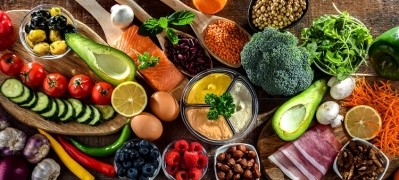Meat, eggs and milk play ‘vital’ role in meeting global nutrition targets: FAO

Plant-based foods are well and truly in the limelight, as innovators work to mimic conventional meat and dairy products with animal-free ingredients. Statista expects the global plant-based food market to be valued at an eye-watering $77bn (€69bn) by 2025.
But at a global level, plant-based foods may not provide sufficient nutrition to achieve public health targets.
In what is considered the ‘most comprehensive’ analysis yet of the benefits and risks of consuming animal source foods, the United Nations’ Food and Agriculture Organization (FAO) concludes that meat, eggs and milk offer ‘crucial’ sources of much-needed nutrients which cannot easily be obtained from plant-based foods.
The benefits of consuming animal source foods
The report, based on data and evidence from more than 500 scientific papers and 250 policy documents, was requested by FAO governing body the Committee on Agriculture (COAG).
The first component of the assessment is focused on the contribution of terrestrial animal source foods – such as meat, eggs and milk – to healthy diets for improved nutrition and health. Importantly, some agrifood systems and population subgroups were found to consume high quantities of animal source foods, and others significantly less.
Within appropriate dietary patterns, terrestrial animal source foods can make ‘vital’ contributions to meeting the nutrition targets endorsed by the World Health Assembly and the 2030 Sustainable Development Goals Agenda, according to the FAO.
These relate to reducing stunting, wasting and overweight among children under five years of age, low birthweight, anaemia in women of reproductive age, and obesity and non-communicable diseases (NCDs) in adults.
Nutritional benefits associated with consumption of these products play a key role here: such foods provide ‘high-quality’ proteins, important fatty acids and various vitamins and minerals including iron, zinc, selenium. Vitamin B12, choline and calcium, among others.
Specifically, evidence from high-income countries shows positive effects of lean red meat consumption on the muscle health of older adults, explained the UN agency. “Robust evidence shows that the intake of muscle tissue is positively associated with the iron status in adults. Evidence suggests that, among all women of reproductive age in any context, two eggs per day can provide high proportions of recommended nutrient intakes, particularly for choline, selenium and vitamin B12.”

Bioavailability is also relevant. The report found that iron and zinc in red meat are bound in compounds that are more bioavailable and may be more easily digested than those in which they are bound in plant-based foods. Further, consumption of terrestrial animal source foods has been shown to counteract the effects of antinutrients found in plant-based foods, according to the report authors.
But isn’t there beef with red meat?
Consumption of processed meat, even at ‘very low levels’ were found to elevate risk of mortality and chronic disease outcomes, including cardiovascular disease and colorectal cancer.
And red meat consumption has been linked to NCD risk. The Global Burden of Disease Study 2019, published in The Lancet in 2020, noted a ‘substantial’ increase in diet-related burden was observed, which the authors associated with red meat intake. Specifically, some increased risk of chronic disease was associated with consumption of 18-27g of red meat per day and 0-4g of processed meat per day.
This study has since received criticism from the World Cancer Research Fund International, who says the study ignored the nutritional value of red meat and lacked rationale.
In the FAO report, the UN agency noted that other studies have shown non-significant effects of beef on chronic disease biomarkers.

The International Meat Secretariat (IMS), a non-profit representing the global meat and livestock sector, has applauded the report. “FAO’s conclusions reaffirm that meat plays an essential role in positive health outcomes and point to the urgent need for further research on specific populations’ nutrient needs, as well as the need to accelerate adoption of climate-smart livestock production.
“The highest standard evidence, including FAO’s analysis, must inform global and country-level recommendations on meat production and consumption, to harness meat’s benefits for human health and the environment.”
The risks of consuming animal source foods
As to the risks associated with the consumption of animal source foods, cow’s milk and poultry eggs are among the eight food groups that pose allergenic risks to consumers.
Further, one-third of the global food-borne disease burden is associated with the contamination of terrestrial animal source foods, predominantly linked to bacterial causes and diarrhoea. Exposure to food-borne disease hazards is also increasing due to the intensification of livestock production and increasing consumption of processed foods, noted the report authors.
“Food-safety burdens must be alleviated by enhancing sanitation and mitigating health risks in the interfaces between animals, humans and the environment…Strengthening national food-control systems is key to ensuring food safety for better health and nutritional outcomes.”
Spotlight on policy recommendations
In reviewing food and agriculture legislation and nutrition policies, the FAO found that recommendations relating to the consumption of terrestrial animal source foods was ‘scarce’, primarily qualitative, and mainly targeted to the general public.
For the most part, recommendations on animal source food consumption – in NCD-risk documents – largely focused on mitigating potential health risks linked with NCDs, with very little consideration of micronutrient intake and ‘almost none’ to environmental sustainability.
It should be noted that environmental sustainability was not the focus of the FAO’s assessment, but the report authors observed that such considerations were only found in documents from eight upper-middle and high-income countries.

The FAO’s findings are topical, given recent research putting micronutrient deficiencies in the spotlight.
According to recent research led by the Global Alliance for Improved Nutrition (GAIN), the EAT-Lancet Commission diet – guidelines for a healthy diet that places food production within planetary boundaries – does not provide enough essential vitamins and minerals to nourish the global population.
To meet the dietary guidelines, the EAT-Lancet Commission suggests that global consumption of red meat and sugar will need to decrease by more than 50% by 2050, while consumption of nuts, fruits, legumes and vegetables will need to increase more than two-fold.
To amend micronutrient deficiencies associated with the EAT-Lancet diet with food, rather than supplements, the GAIN researchers suggest turning to minimally processed, intrinsically nutrient-dense foods, including meat and animal source foods. Their proposed modified diet would increase daily intake of eggs by 60 kcal, beef by 45 kcal, chicken and other poultry by 30 kcal, and pork by 15 kcal.

The FAO’s assessment of micronutrient-related recommendations in policy documents revealed that most provided quantitative indications in terms of daily or weekly intakes of animal source foods. Significantly, consumption of terrestrial animal source foods above or below recommended levels is ‘rarely addressed’, noted the report authors.
“This is a significant gap given the co-existence of micronutrient deficiencies with overweight, obesity and NCDs.”























